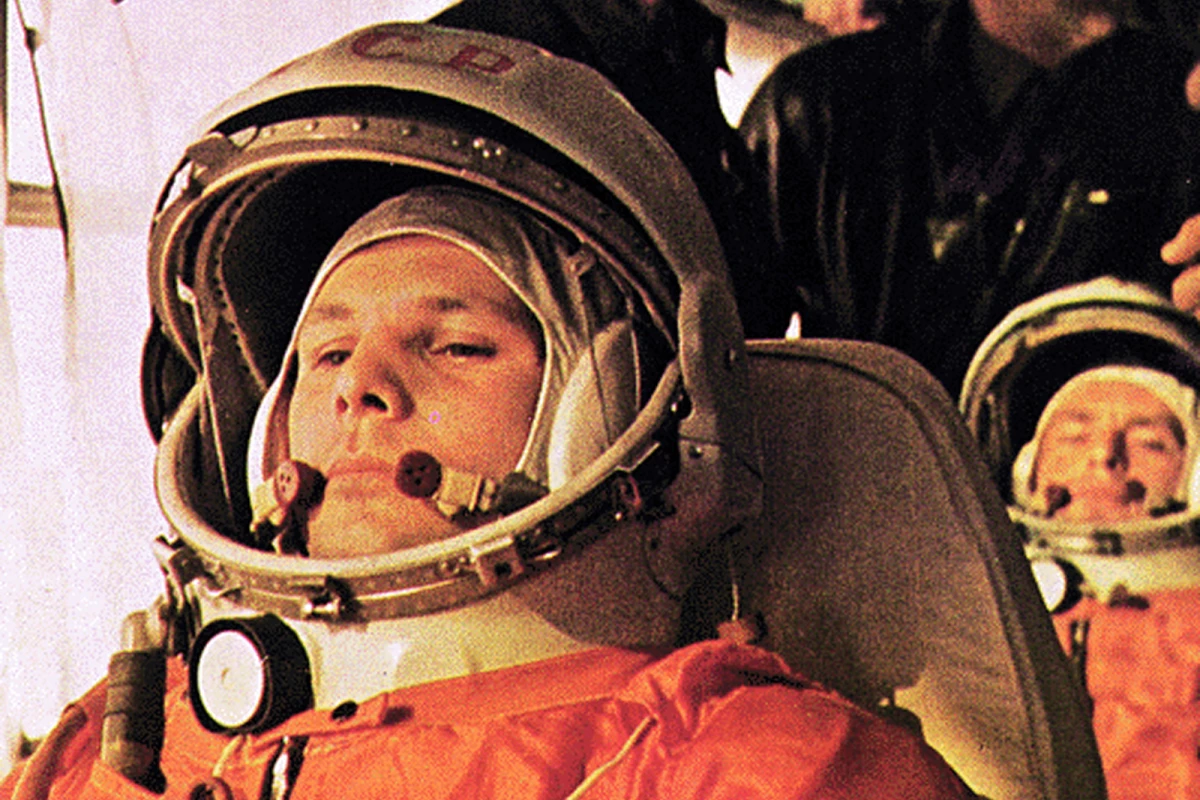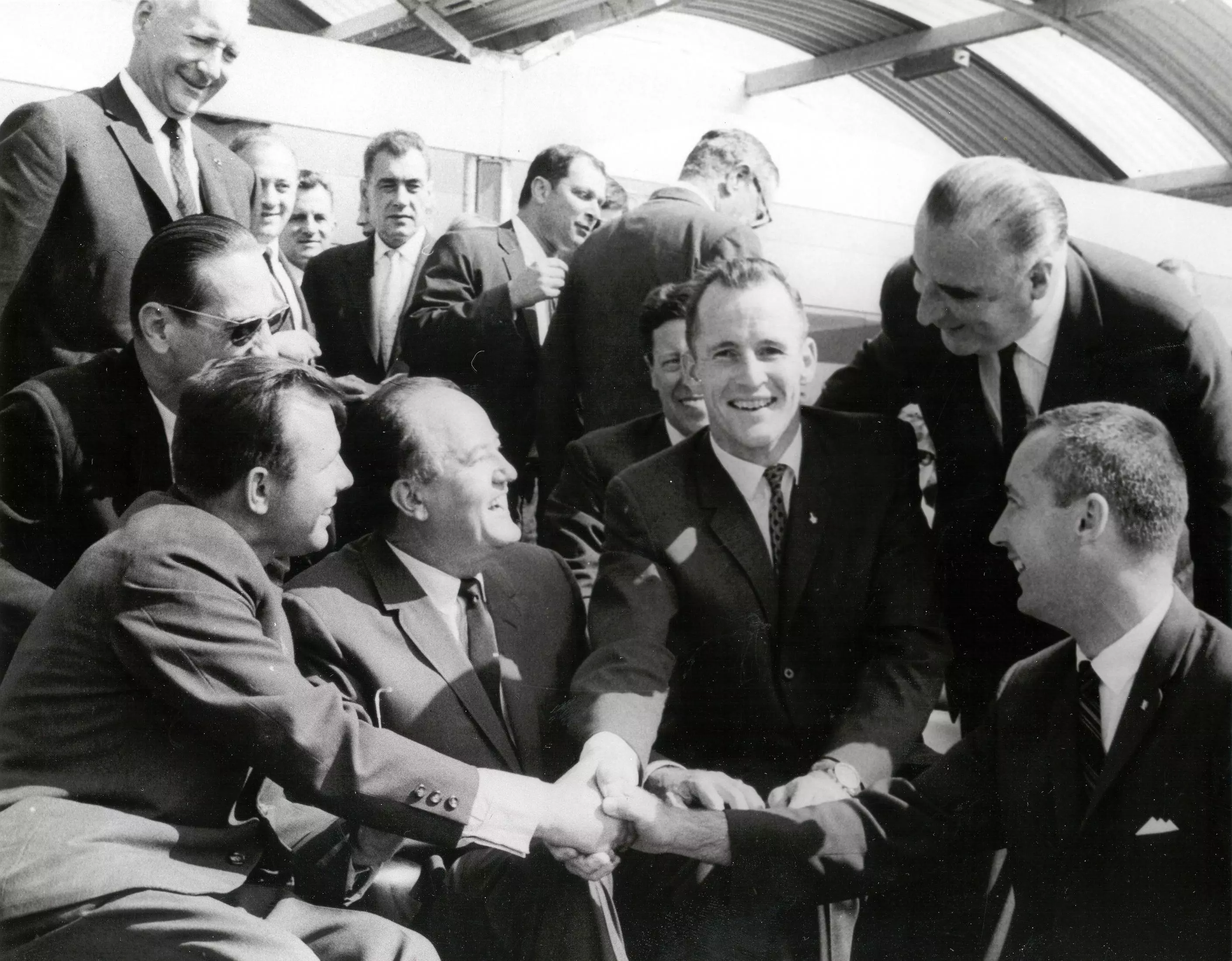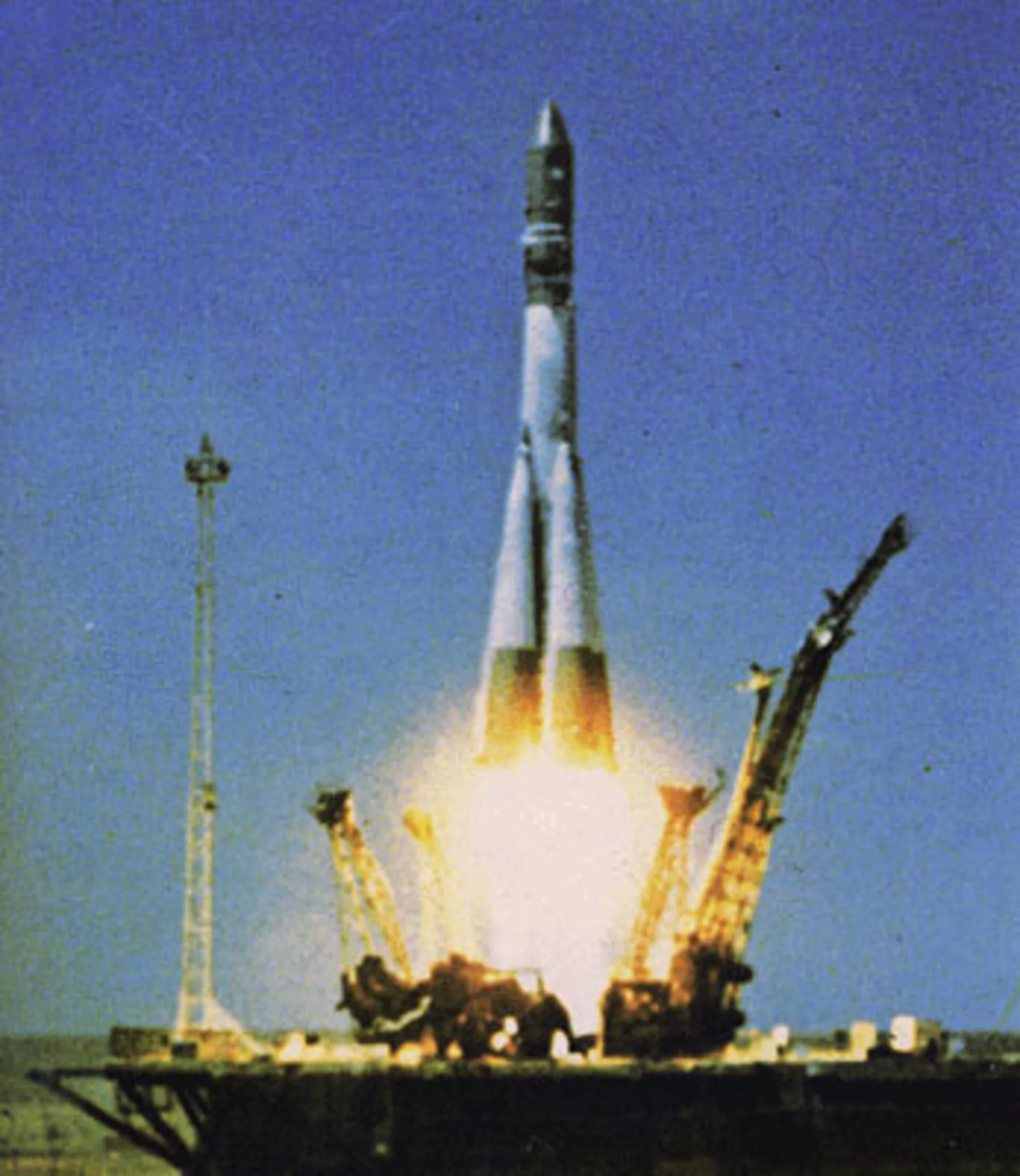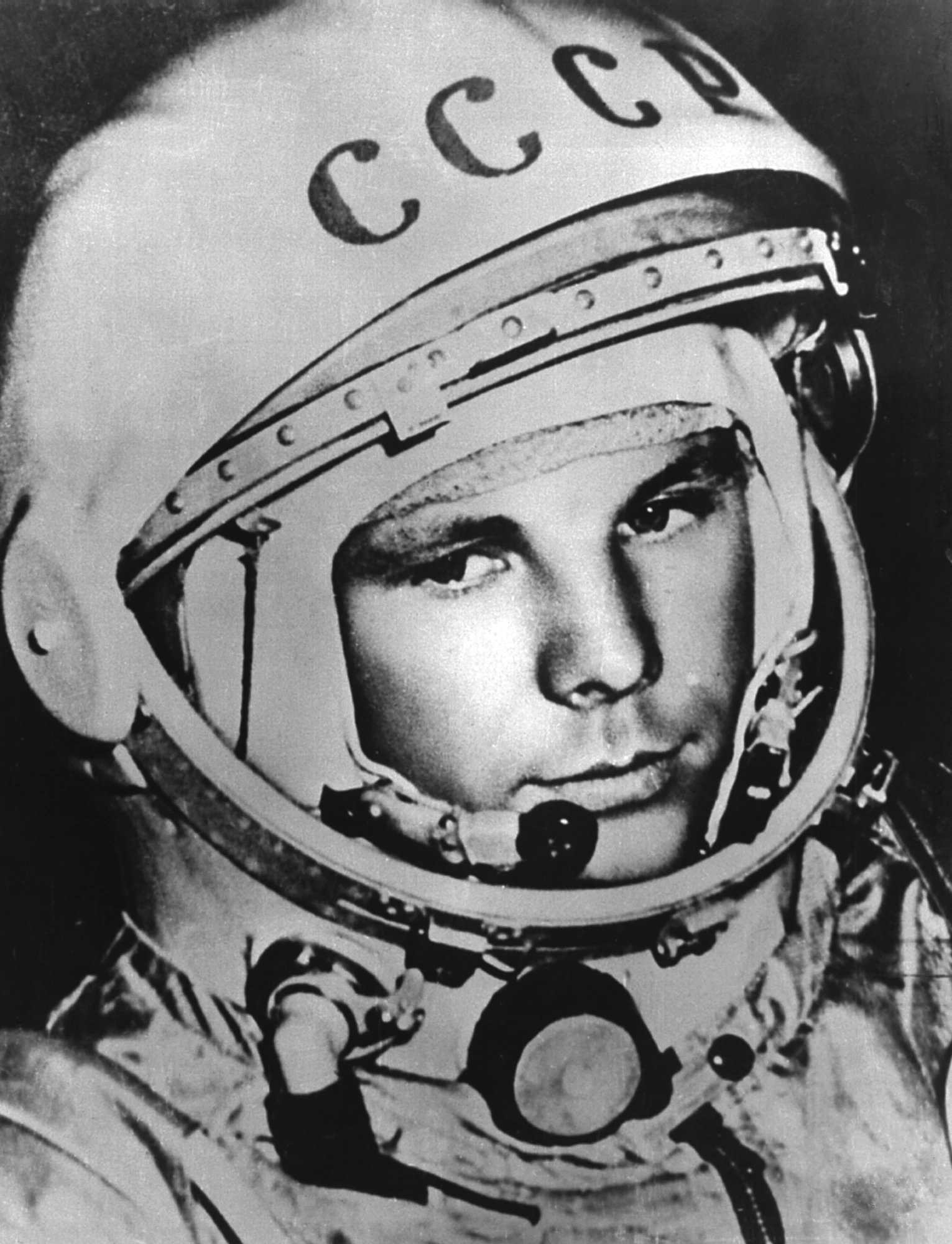Sixty years ago on Monday, Soviet cosmonaut Yuri Gagarin lifted off from the Baikonur Cosmodrome atop a variation of a rocket originally designed to launch nuclear weapons to become the first person to orbit the Earth. Though his flight lasted only one hour and 48 minutes, it was an historic event that ranks right up there with when the first fish decided to take a step on dry land.
In the early morning of April 12, 1961, a Vostok-K 8K72K rocket sat on the launch pad waiting for its pilot. In a bus some distance away, 27-year-old senior lieutenant Yuri Gagarin sat nervously in his bulky orange spacesuit with the freshly painted acronym CCCP glistening in still-wet red letters. Behind him sat backup cosmonaut Gherman Titov in a similar suit, and second backup Grigori Nelyubov.
Shortly before, the three men had enjoyed a pre-flight breakfast. Perhaps "enjoyed" is putting it strongly because, unlike their American counterparts who ate the traditional pilot's breakfast of steak and eggs, the Russians had to eat the same rations packed in toothpaste tubes in the Vostok 3KA space capsule – meat puree, black currant jam, and cold black coffee.

On the way to the launch pad, Gagarin asked for the bus to stop, so he could relieve himself on one of the tires, starting what became a tradition that cosmonauts follow to this day.
Gagarin had a lot to be nervous about. He'd only been chosen for the mission over Titov four days earlier and, though he'd trained hard for the mission, he hadn't seen the actual spacecraft until he arrived at Baikonur. Even more worrying, it was less than a year since the American U2 pilot Gary Powers had been shot down over Soviet territory. Would the Americans return the favor to Vostok 1?The mission that almost wasn't
Vostok 1 was a mission that almost didn't happen. There was great opposition from the military, who saw manned spaceflight as a waste of time and resources. Approval was only given by making the Vostok spacecraft dual purpose. Along with carrying cosmonauts, a robotic version would be used for orbital reconnaissance missions. Called Zenit, this variant was used by the USSR in various forms into the 1980s.
Even then, the designers of the Vostok spacecraft had little leeway. The rocket was one of the R7 family of boosters that were originally developed as ICBMs to deliver nuclear warheads to American and NATO targets, and the engineers had to design the spacecraft to fit inside the nose cone of the rocket as delivered. There could be no modifications of dimensions or performance.

The result was a two-stage spacecraft made up of an Instrument Module that looked like two squat cones stuck together at the base and contained the support systems and the retrorocket engine, and the Reentry Module that carried Gagarin. The latter was shaped like a sphere completely covered with ablative heat shield material with which it could safely hit the atmosphere at any angle.
Despite going on one of the greatest adventures ever, Gagarin wasn't so much a pilot as payload. Once he was strapped into his seat and the hatch was sealed, he had nothing to do before the launch except listen to music. The Vostok was either completely automatic or commanded by ground signals because the designers weren't sure if Gagarin would remain lucid once he was in orbit. He couldn't even unlock the manual controls without entering a secret code that he carried in a sealed envelope.
At 06:07 GMT, the engines ignited. Unlike in American launches, the rocket was held down by clamps until thrust reached its maximum, then it was released. The side boosters separated two minutes into the flight and the core stage at the five-minute mark. As Vostok 1 rose into orbit under the thrust of the upper stage, Gagarin's contribution was to frequently reassure ground control that he was fine.In orbit
At 06:17 GMT, Vostok 1 was in orbit at an altitude of between 91 nautical miles (169 km) and 177 nautical miles (327 km), circling the Earth once every 89.1 minutes. Ground control followed its path using a series of tracking stations, but these could only be set up on Soviet territory and the USSR didn't yet have oceanic tracking ships.
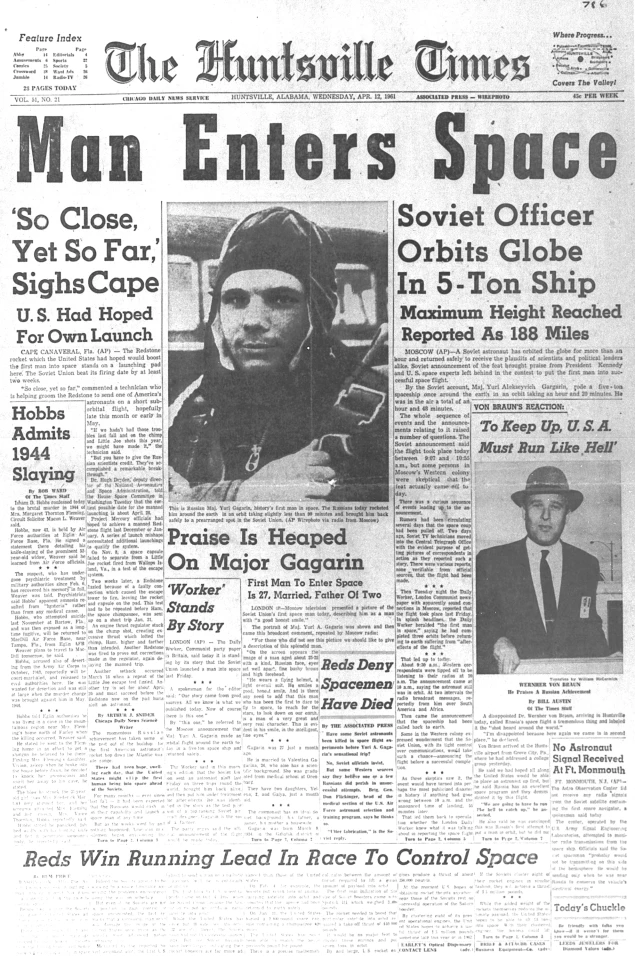
Up until reaching orbit, Vostok 1 was a deep secret, but it was decided during planning to announce the mission to the world after lift off. This was partly to make sure Vostok 1 wasn't mistaken for a military reconnaissance aircraft and also as a way of alerting other countries if the capsule landed in the wrong place and a rescue mission needed to be mounted. Shortly afterward, the American NSA confirmed that Vostok was real when an undisclosed listening station intercepted its capsule television transmissions of Gagarin.
As for Gagarin, he had nothing to do but look out the porthole and describe the view as the autopilot did all the work. Even his spacesuit was designed to automatically protect him if the cabin lost pressure. In that event, its visor would snap shut by itself and his seat's life support system would sustain him for up to four hours.Return to Earth
At 07:25 GMT, the spacecraft automatically orientated itself for reentry and the retrorocket fired. If the engine had failed, Vostok carried enough food, water, and oxygen to keep Gagarin alive until natural orbital decay returned him to Earth in 10 days. That was the theory. In fact, he was in the wrong orbit and wouldn't have come down for 20 days.
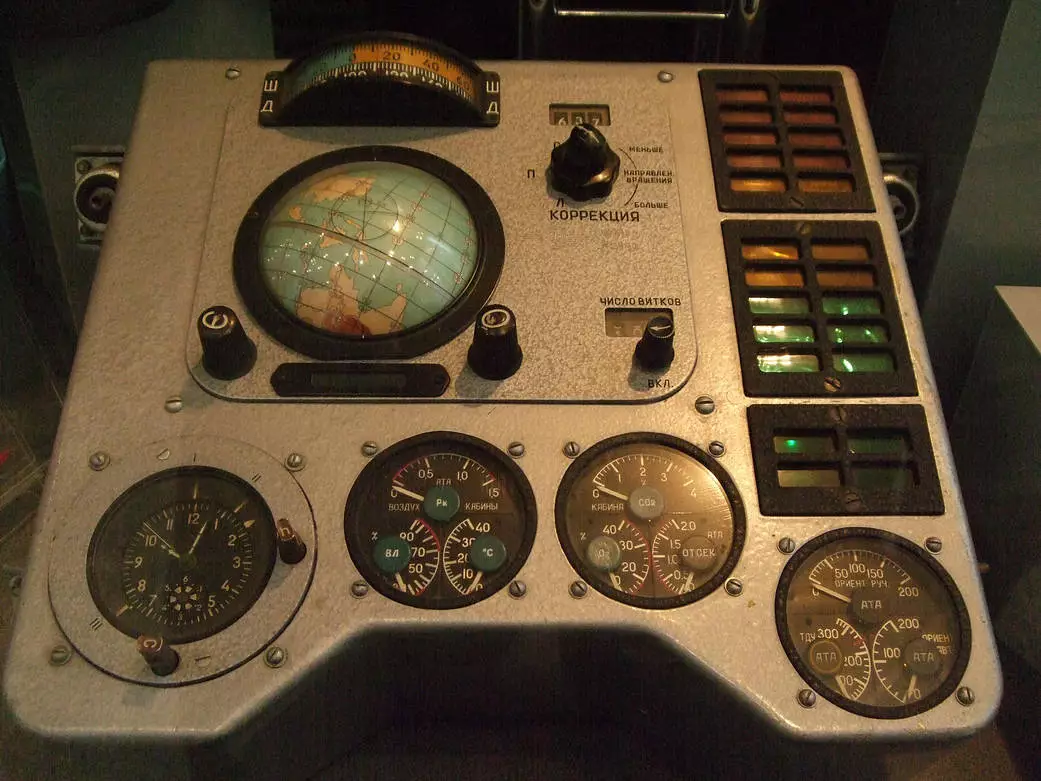
After retrofire, the Instrument Module separated, but one of the straps that held it to Gagarin's capsule failed to sever and he was buffeted by turbulence until the strap melted and broke. As the flames of atmospheric reentry played around his craft, Gagarin experienced 8 g of deceleration.
The most dramatic part of the flight occurred at 07:55 GMT. There wasn't time to equip Vostok with a soft landing system, and even with the capsule's parachute Gagarin wouldn't have survived the touchdown, so at an altitude of 4.3 miles (7 km) the hatch was blasted away by explosives and rockets in Gagarin's ejector seat shot him clear. Out of his seat, his own parachute opened and he descended to Earth in Kazakhstan, where he was greeted by a bewildered farmer and his daughter.
"When they saw me in my space suit and the parachute dragging alongside as I walked, they started to back away in fear," Gagarin later said. "I told them, don't be afraid, I am a Soviet citizen like you, who has descended from space, and I must find a telephone to call Moscow."
